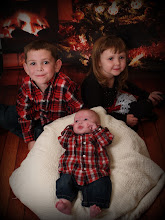Both of these procedures have made immense progress since my Mom underwent her first surgeries 15 years ago. At the time of my Mom's procedures she first had a biopsy, then later she had a unilateral mastectomy. This means that she had one of her breasts removed while the other remained. To keep her natural shape and look she chose to use a prosthetic. This was simply a silicone gel type contraption that resembled the shape of a breast. Mom had a bra with a pocket that she slipped the fake breasts into, and she looked as though she had two normal breasts. There were draw backs though. It was heavy, and it tended to move wherever it chose. Imagine trying to run with a gel weight attached to the front of your chest with bra straps. After chemotherapy and a little time for recovery, Mom chose to have the other breast removed and reconstructive surgery preformed. I do not remember for sure exactly how her implants where placed. Either way though, she did undergo an expansion process meaning they slowly inflated the implants to achieve a desired size. Mom's implants were very hard, and she had scars across her chest from the original surgery. Over time the scars would have faded, but the overall feel of her breasts would not have changed much. That gives you a slight idea of what my Mom's were like, now we will discuss the process of mastectomy and reconstruction.
Every case will be slightly different because of personal choice, and what doctor we choose. Katie and I will be using the same doctors for our bilateral mastectomy (both breasts) and reconstructive procedures, but there are still factors of personal choice to be considered. First of all we have an Oncologist, a physician of cancer, who preforms the mastectomy or removal of breast tissue. The second portion of the surgery is preformed by a plastic surgeon who is qualified in the reconstructive process. For Katie's surgery, which was performed in February, her procedures took around five hours. This seems like quite a long time, but the combination surgery is beneficial in many ways. Lets break it down a little to get a better understanding about the options.
There are typically two conditions under which mastectomy is considered. The primary reason being the presence of cancer, and the second, which is being seen more and more these days, prophylactic or preventative mastectomy. When cancer is already present your doctor has a great deal of influence on what choices are made. A biopsy or lumpectomy is usually preformed to determine if cancer is present, and if so what type of cancer it is. This portion of diagnosis is very important, because this is the point at which your doctor gives your their recommendations. Typically when cancer is invasive it is recommended to have the complete breast removed to ensure that all breast cells that could contain cancer are taken out of the body. Lumpectomy, or removal of just the cancer cells and small amount of tissue surrounding them, is preformed when cancers are non-invasive and have clear margins. When a lumpectomy is preformed it is usually paired with radiation to ensure that any other cancerous cells are killed. Even when lumpectomy is an option, you still have the choice of mastectomy. Once a woman has had cancer in her breast she is at a slightly higher risk of recurrence, so the decision to keep or remove your breast tissue is yours. Reconstructive surgery is also available to maintain symmetry after lumpectomy.
Back to mastectomy. There are the three types of mastectomy - unilateral (removal of one), bilateral (both), and prophylactic (removal of healthy tissue). Depending on the doctor you choose, there are also different methods of preforming the mastectomy. The method chosen depends a great deal on your doctor, as well as, your individual case. Simple or total mastectomy includes the removal of the nipple, areola, and all of the breast tissue. Modified radical mastectomy is similar to the total mastectomy, but also involves the removal of lymph nodes for pathological testing. Subcutaneous mastectomy removes all of the breast tissue while leaving the nipple and areola intact. These methods can be skin sparing if the choice is made to preform reconstructive surgery at the same time as mastectomy. Katie had a skin and nipple sparing (subcutaneous mastectomy) paired with lymph node removal. At the time of her surgery they removed as much of her breast tissue as possible, and also placed an expander under her pectoral muscles. Slowly over the next several months she will have saline injections into her expander's to stretch her muscle tissue and skin to eventually fit an implant. If a person knows that they will be having reconstructive surgery this method is a good choice. The other option would be to have a non-skin sparing mastectomy. In this procedure they remove your skin tissue along with the breast tissue. Women who have not made the decision about reconstruction, or have decided not to undergo reconstruction have this procedure. You will still have the option of later on deciding to have an expander process or a flap process preformed.
I have only really mentioned one of the available reconstructive process today, but I think I need to break this up into two days. Tomorrow I will discuss the different processes in more depth. This morning I will leave you with this information. There are many websites available from plastic surgeons who preform reconstructive surgery. If you are interested in seeing pictures I would recommend that you visit a few and see what is available. Understand though, that every persons results will be different and dependent on the individual. If you are not considering the surgery please don't visit the sites. This is a very important decision, and should not be taken lightly.
HBOC Week 2016
8 years ago










